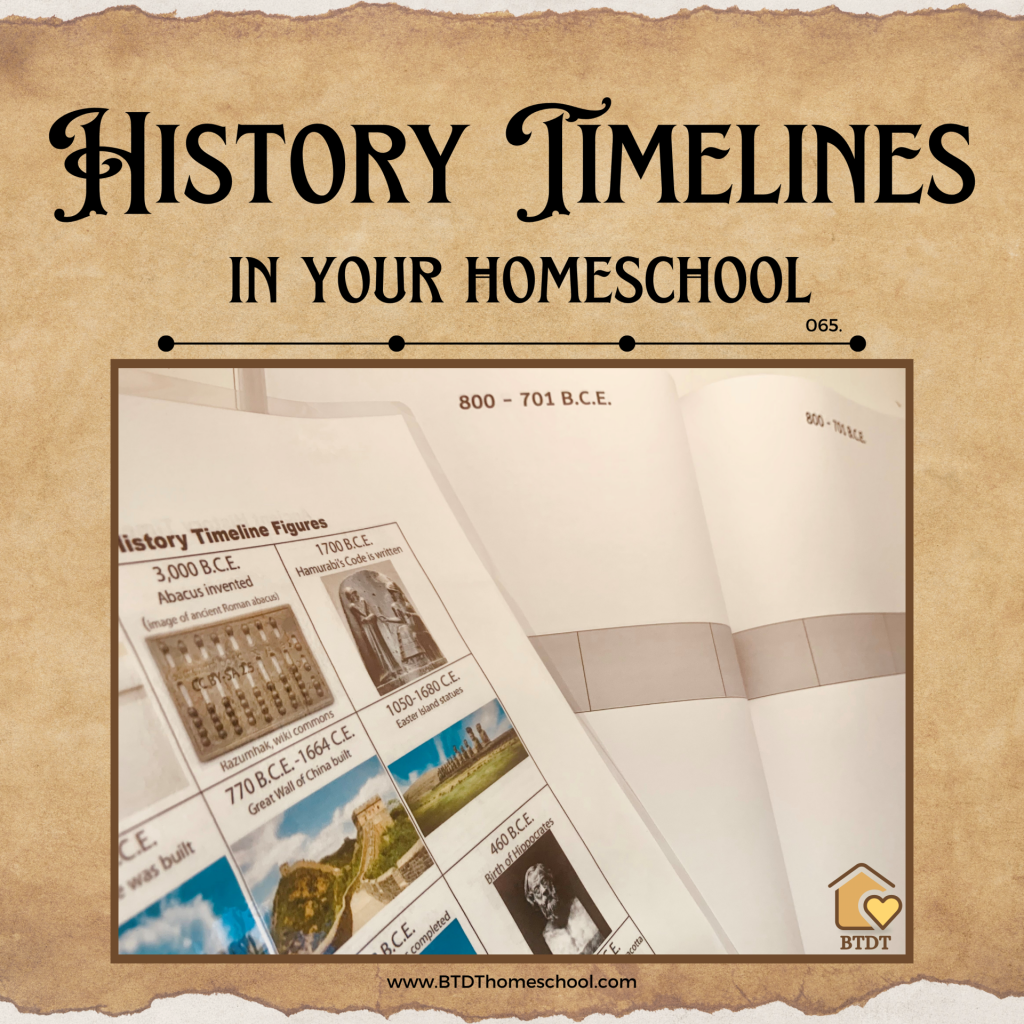048.
Music and Art in Your Homeschool
Fine Arts: the study of great works of art, the listening to uplifting pieces of music, and the freedom to be creative in any subject can enrich and expand what we already offer to our children. Art and music education has been proven to stimulate various cognitive functions, enhancing a child’s ability to think critically and problem-solve.

Episode 048:
TWO WAYS TO LISTEN TO THIS EPISODE:
1. Click PLAY Button Above ^^ to listen here.
2. OR Listen on your favorite podcast platform:

Apple – Spotify – Google Play – Amazon – Others
Scroll down for this week’s FREEBIE:
Music Book: K-4th (pdf)
Songwriting Journal: 4th-12th (pdf)
Brand New to Homeschooling?
GETTING START PAGE >>
Kindergarten Page >>
High School Series >>
Show Notes
In a world driven by technology and academic excellence, it’s so very easy to overlook the significance of art and music education for our children. So often we are hyper focused on the three R’s- we want our kids to be strong readers, we want them to excel in math, we want to make sure we are hitting the STEM subjects so they can get into a great college or career. It is a sad reality that “Fine Arts” is one of the first subjects to get dropped whenever our homeschool schedules get out of whack. We might also be balancing multiple students or bogged down with outside classes and extracurriculars and it’s easy to just push art and music to the back burner. Or maybe you are not artsy, or your kid is not, and you wonder if this even matters.
But it does matter! And it’s so much fun! No matter what style of homeschool you use, art and music can be woven into your year. The study of great works of art, the listening to uplifting pieces of music, and the freedom to be creative in any subject can enrich and expand what we already offer to our children. Introducing art and music might even make you fall in love with these subjects, and possibly inspire YOU to get creative. A lot of people may not see the importance of art and music especially for children. They might think it’s boring, a waste of time, or for more mature students. But these creative disciplines play a vital role in shaping young minds, fostering holistic development, and nurturing skills that extend far beyond the canvas or the stage. And it’s never too early to expose young children to the arts.
Why is Art and Music Study for Children so Important? (6:37)
- Cognitive Development
Art and music education has been proven to stimulate various cognitive functions, enhancing a child’s ability to think critically and problem-solve. When children engage in artistic or musical activities, they learn to analyze complex patterns, and use their imagination. These skills not only benefit their academic pursuits but also prepare them for real-life challenges.
- Emotional Expression
Art and music provide a safe and expressive outlet for children to convey their emotions and feelings. Whether through painting, playing an instrument, or singing, these creative forms allow kids to explore and articulate their innermost thoughts. This emotional release can be particularly beneficial for children who find it challenging to express themselves verbally.
- Creativity and Innovation
Nurturing creativity in children is crucial in today’s rapidly changing world. Art and music encourage kids to think outside the box, explore new possibilities, and develop innovative problem-solving skills. These disciplines foster a mindset that values uniqueness and diversity, which is essential for success.
- Improved Focus and Discipline
Learning an instrument or creating a piece of art requires dedication, practice, and patience. These disciplines teach children the value of hard work, perseverance, and time management. As they strive to master their craft, they develop essential life skills that will serve them well in any endeavor.
Learn & Master

Quality private instruction WITHOUT the expensive private lesson price!
- Cultural Awareness
Art and music are powerful tools for introducing children to different cultures and traditions. Exposure to diverse artistic expressions and musical styles helps broaden their horizons and fosters a sense of empathy and respect for others. This cultural awareness is invaluable in promoting tolerance and global citizenship.
- Enhanced Communication Skills
Engaging in artistic and musical activities encourages effective communication. Whether collaborating on a group project, giving a presentation, or performing in front of an audience, children develop the ability to convey their thoughts and ideas with confidence and clarity.
- Stress Reduction and Emotional Resilience
Art and music provide a therapeutic escape from the pressures of everyday life. Engaging in these activities can reduce stress and anxiety in children. The act of creating something beautiful or playing soothing music can have a calming effect, promoting emotional resilience and mental well-being. If you want to give your kids a well-rounded education, art and music study for children is just as important as mathematics, science, or language. These creative disciplines foster so much development and growth, emotional expression, creativity, and a host of other skills that prepare children for success in an increasingly complex world. Let’s prioritize the arts and music in our children’s education, recognizing that they are not just extracurricular activities but essential components of a holistic learning experience. By doing so, we empower the next generation to become individuals who can contribute positively to society and find fulfillment in their own unique ways.
Music
Incorporating Music into your homeschool (10:15)
Incorporating music into your homeschool curriculum can be a fun and enriching experience for your kids. Music not only enhances their creativity, but also offers so many educational benefits. Through the years we’ve done a variety of things to bring music into our home. This can even start before your child is even born. Singing and playing music to your baby helps develop a deeper connection with them. Make up songs for everything- getting in your car seat, waking up, cleaning the house. When not singing, provide instruments like a lap harp, to a maracas, to drums. Both my kids love music, but one has chosen to pursue music professionally. I made an entire year’s curriculum around music for him in middle school-and his year-end final project was building his own guitar.
Music Appreciation: Start by just introducing your children to a wide range of music genres. Listen to classical music, jazz, pop, folk, and world music. Discuss the differences in style, instruments, and emotions evoked by each genre. Just having music playing in the house or car is a great way to expose kids to music. And don’t be afraid to reach outside of your own comfort zone to introduce different types of music. There’s a good chance that your child has different taste in music, so expose them to all kinds of genres.
This Composer Book Series was a favorite for both of our families:
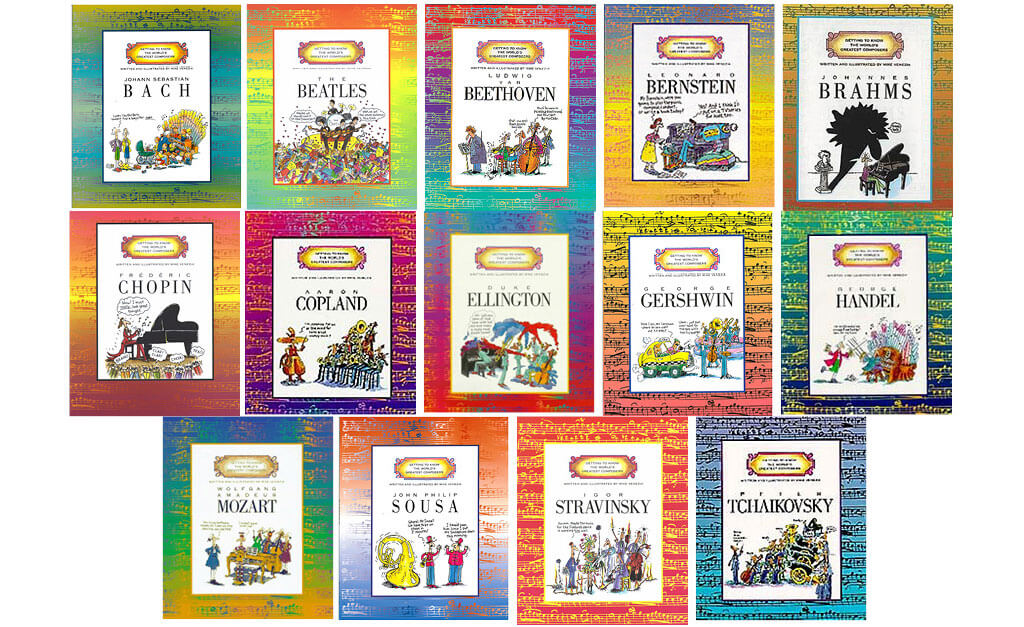
We also choose to explore the works of famous composers and musicians pretty early. You can find all kinds of fun picture books at the library about your favorite musicians and composers, and we loved the Beethoven’s Wig cds- they are classical music set with lyrics that are pretty catchy and very memorable. I love being at the symphony and one of my kids says I know the words to this song!
Beethoven’s Wig: Sing Along Symphonies
Musical Instruments: Consider offering your children the opportunity to learn to play a musical instrument. And this doesn’t have to be expensive. You can choose to do private lessons, but there’s also a lot of online lessons that are very affordable like on outschool or you can do lessons on DVDs. Instruments like the piano, guitar, violin, or even the recorder are good choices for beginners. Have a big basket of musical instruments in your house. You’ll be surprised at how popular these toys are!
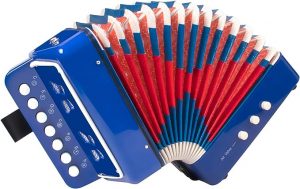
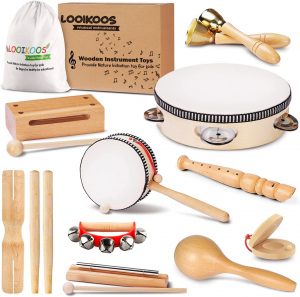
Instruments Musical Toys

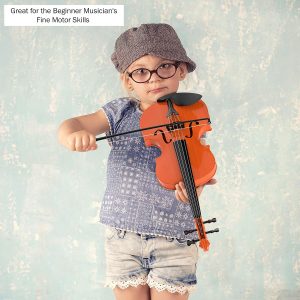
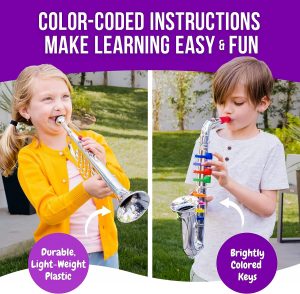
Singing: Singing can be a wonderful way to bring music into your home. Encourage your children to sing along with their favorite songs or learn new songs. Singing helps develop pitch, rhythm, and language skills. You can incorporate singing into your daily routines, such as singing a “Good Morning” song or singing during chores.
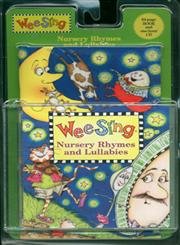
Singing can also help teach reading. Karaoke was one of the ways that I taught my youngest how to read. Put a karaoke song on YouTube, give them a microphone and the reading instruction is done for the day!
One of the ways I taught my kids how to read is with Karaoke!

We took a couple classes when the kids were really little- Kindermusik and then Music Together. They are super fun mommy and me classes that really help introduce kids to music. I mostly took them for my toddler but my baby liked them so much- we did these for a long time.
Music Theory: Teach the basics of music theory, like reading sheet music, understanding notes, rhythms, and scales. There are so many resources for all age groups and skill levels. You really don’t have to be musical yourself to teach this. I will link some great resources in our show notes.

Music History: Explore the history of music, including different periods like Baroque, Classical, Romantic, and Contemporary. Learn about famous composers and musicians, their life stories, and the cultural context of their work. I did musical composer unit studies. I’ll link those books – They are so good for elementary age kids.


Create a Music Corner: You can dedicate a space in your home for music. Musical instruments, a music stand, Music note posters, a whiteboard for composing, and a collection of music books.

Music-Based Activities: Incorporate music into other subjects. You can also use songs to teach math concepts like memorizing multiplication tables or use historical songs to learn about different time periods.

Field Trips and Concerts: Attend local music concerts, performances, and musical theater productions. There are many symphony performances catered to kids and families. Some may feature popular songs, like Star Wars and other recognizable movie scores.

We’ve also done an instrument petting zoo where you can try out instruments. There’s also a lot of great museums and historical sites dedicated to celebrating music.
Music Challenges and Projects: Organize music-related challenges or projects. For instance, have your children compose their own songs, or research a specific musical era and present their findings.
Online Resources: There are also numerous online resources, apps, and educational platforms that offer music lessons, interactive activities, and quizzes. Take advantage of these resources to enhance your music curriculum. We’ve really enjoyed Learn & Master! There are some wonderful Music options on Outschool
Collaborative Activities: Encourage your children to collaborate with each other or with friends. They can form a band, write songs together, or create musical performances for a homeschool co-op or groups. There are even homeschool options for this in a lot of areas. We have a homeschool marching band, orchestra and such in our area.
My son was in School of Rock for a few years, and he met a lot of those kids there. He also does open mic nights and loves to perform. You don’t even have to perform; you can go and listen to some of the local artists.
My kids played with a local Irish Music school for years. They played in session bands at festivals and concerts and my kids competed at Irish dance competitions in a music category. We have friends whose kids busk on weekends for cash, too.

Remember that the goal is to make music an enjoyable part of your life. Encourage creativity and exploration, and allow your kids to pursue their musical interests and passions. Incorporating music into your homeschooling routine not only enriches your children’s education but also provides them with a lifelong appreciation for the art of music. Whether they become musicians or simply enjoy listening to music, the skills and knowledge gained from a musical education can have a lasting impact on their lives.
ART
Incorporate Art into Your Homeschool (26:40)
Like with music, you do not need to be terribly artsy to Incorporating art and artist study into your homeschool curriculum. This can be a rewarding and enriching experience for your children. It not only fosters creativity but also helps them appreciate the rich world of art and the artists behind the masterpieces.
Artistic Pursuits is a favorite Art Curriculum we both used with our children:

Start with the Basics:
In the early days you can just start by having an art corner with supplies- like a basket of paper, tape, scissors, and markers. This was available to them all the time, and sometimes my kids would wake up before me and create 800 paper airplanes or drawings of the exact same thing and sometimes my house was overrun with little pieces of cut paper. I promise, it won’t always be like this. Remember that it is really about the process not the product.

AND they always have clearance items!
Later you can start getting into art more deeply by beginning to explore:
- the fundamentals of art, such as color theory, perspective, and various artistic techniques.
- Explore different art forms, including drawing, painting, sculpture, printmaking, and more.


- Art History:
- Introduce your children to the history of art by studying different art movements and periods (e.g., Renaissance, Impressionism, Cubism).
- Learn about famous artists from different eras and their contributions to the art world.

- Famous Artists:
- Choose a different artist to study each month or semester. Dive deep into their life, works, and style.
- Your kids can create a dedicated artist notebook or portfolio for each artist, where they can document their findings and create their own artworks inspired by the artist’s style. Ambleside Artist Study
- Art Appreciation:
- Visit art museums and galleries to see famous artworks in person, or take virtual museum tours online. Last year we did an entire school year of teen art programming at our local museum. Check and see what’s available in your area or ask a museum to do a class.
- Analyze and discuss famous artworks, exploring their symbolism, themes, and historical context.

- Art Projects:
- Allow for creative freedom by letting them interpret the artist’s work in their unique way.


- Artist Biographies:
- Read biographies or watch documentaries about famous artists. Discuss their life stories, struggles, and inspirations.
- Use these stories as a way to teach perseverance, dedication, and the importance of following one’s passion.

- Art Journals:
- Have your kids keep an art journal where they can sketch, paint, or collage their thoughts, feelings, and observations.
- Encourage them to use their journals to experiment with different art techniques and record their artistic progress.
- Art Appreciation Challenges:
- Create challenges or assignments related to specific artists or art movements. For example, ask your children to create a piece of art in the style of Vincent van Gogh or Jackson Pollock.
- Host art exhibitions within your homeschool group or family and showcase your children’s creations.
- Online Art Lessons: We’ve really enjoyed the painting instruction from Learn & Master.
- Field Trips and Workshops:
- Attend local art exhibitions, workshops, and art classes to provide hands-on experience and interaction with the local art community.
- Seek out local artists who might be willing to give your children private art lessons or studio tours.
- Art Books and Resources:
- Build a library of art books, both for learning about artists and for practical art instruction.
- Utilize online resources, such as art history websites, virtual art galleries, and instructional videos. You know one of my cheap art hacks is to buy end of year calendars and then sneak quality art prints into my kids bathrooms!

- Cross-Disciplinary Learning:
- Combine art with other subjects, such as history (study the art of a specific time period), literature (illustrate scenes from books), or science (create art inspired by natural patterns).
- Fibonacci Sequence: This sequence is closely connected to the golden ratio and frequently occurs in various facets of human life. The Fibonacci sequence can also be in the pattern in which sunflowers generate new cells for seeds and even in our own solar system, where the Fibonacci series is used to determine the distances of moons of certain planets such as Saturn, Jupiter, and Uranus. The Fibonacci sequence can also be in the pattern in which sunflowers generate new cells for seeds and even in our own solar system, where the Fibonacci series is used to determine the distances of moons of certain planets such as Saturn, Jupiter, and Uranus. Learn more about Fibonacci in Art in this YouTube Video.

40+ Fun Art Projects to Build Amazing Math Skills Ages 7+

- Celebrate Creativity Encourage your children to explore their creativity freely, whether through drawing, painting, or other art forms. Display their artwork in your homeschool space to create a gallery of their creations.
Incorporating art and artist study into your homeschooling routine not only nurtures your children’s creativity but also helps them develop critical thinking skills, cultural awareness, and a deeper appreciation for the arts. It can be a dynamic and engaging way to enhance their education and broaden their horizons. What a fun way to learn!

is our Favorite FREE At-Home Paint Party






